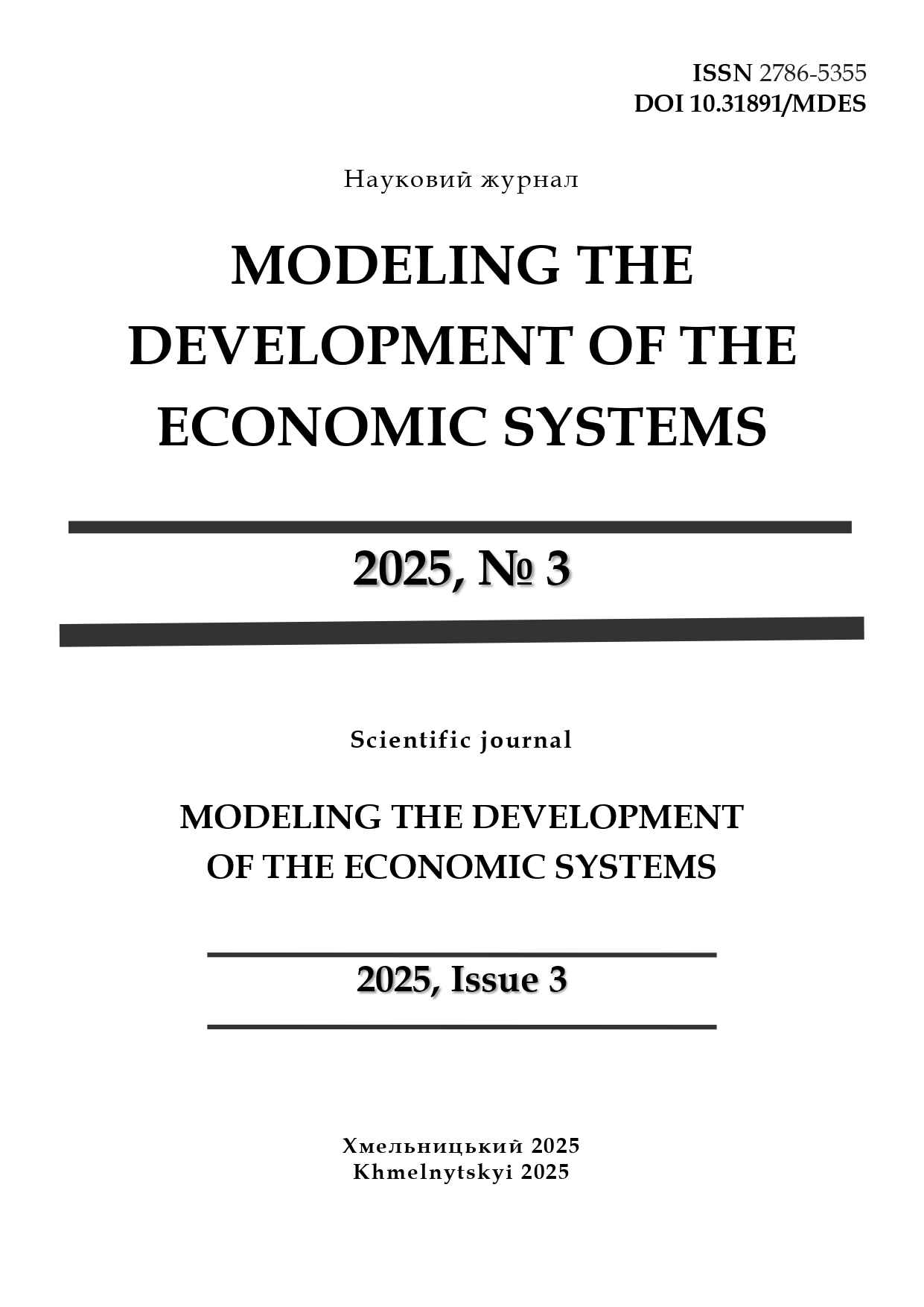STRATEGIC GUIDELINES FOR IMPROVING THE SPECIALIZATION OF LIVESTOCK ENTERPRISES
DOI:
https://doi.org/10.31891/mdes/2025-17-35Keywords:
specialization, agricultural enterprises, livestock, efficiency, combination of crop and livestock production, concentration, sustainable development, managementAbstract
The article is devoted to justifying strategic guidelines for enhancing the specialization of livestock enterprises in the face of today's challenges. Analysis of the sectoral structure of agricultural enterprises in Ukraine has revealed a steady trend towards a decrease in the share of livestock in the formation of gross agricultural output, accompanied by a simultaneous increase in the share of crop production throughout the entire period of independence. In the process of modern specialization of agricultural production, three main trends are observed: the predominance of multi-sector specialization with a concentration on one or two types of products and the development of related industries; the spread of narrow-profile production with a completed technological cycle and a high level of cooperation; as well as the introduction of a combined type of management based on a rational combination of primary, additional and auxiliary industries. Deepening specialization in agriculture, taking into account the actual size of land ownership and use, involves integrating with other industries to ensure the rational use of resources and environmental protection. It is substantiated that improving the specialization of agricultural enterprises is a key factor in their ability to adapt to modern challenges. It has been proven that rational specialization should take into account climate change, military threats, and the requirements of sustainable development, which will contribute to increasing the stability of the agricultural sector, preserving resources, and fostering long-term food security in Ukraine. When developing it, it is proposed to consider economic, organizational, production, technological, strategic, and environmental aspects. The principles of rational combination of crop production and livestock production in agricultural enterprises are generalized (complexity and closed cycle of resources, zonal compliance and ecological feasibility, resource balance, etc.). Key areas for improving the specialization of farms engaged in crop production and livestock production have been identified, ensuring the restoration and further development of livestock production in agricultural enterprises. These include: optimization of the industry structure, development of intra-farm integration, creation of feed self-sufficiency, improvement of technological interaction among industries, regional adaptation of specialization, and environmental and energy efficiency, among others. The SWOT analysis of specialization will enable livestock enterprises to identify the strategic actions necessary to strengthen their strengths, minimize weaknesses, capitalize on existing opportunities, and effectively counter threats. This is especially relevant during the period of agricultural restoration after the war and for the long-term sustainability of the livestock industry. Directions and measures have been established that will contribute to the deepening of specialization in livestock enterprises. The following are identified as the main directions: optimal ratio between types of livestock farming, depending on resource supply; creation of specialized farms taking into account zonal location; introduction of agricultural and livestock clusters with a closed production cycle; and development of their own feed base. Rational specialization requires the introduction of modern technologies, support for small and medium-sized businesses in the affected regions, the prevention of excessive concentration in livestock farming, increased environmental sustainability, and the development of cooperation. Increasing the share of processing is possible by developing dairy and meat processing facilities at farms and producing products with high added value. At the state level, support is needed through subsidies, preferential lending, compensation programs, and the implementation of targeted programs to restore livestock farming. It is also important to ensure the adaptation of legislation to market conditions and EU requirements for certification, traceability, and animal welfare standards.
Downloads
Published
How to Cite
Issue
Section
License
Copyright (c) 2025 Олексій КРАСНОРУЦЬКИЙ, Тетяна МАРЕНИЧ, Микола КАЛЬЧЕНКО, Олег ЧУБ, Галина ПРУСОВА

This work is licensed under a Creative Commons Attribution 4.0 International License.




